Abstract
1. Estimates of the magnitudes of the unstirred regions associated with isolated frog skin in sulphate Ringer's solution have been made under different stirring conditions.
2. The method of investigation was an analysis of the time course of the p.d. transients which occurred when external sodium concentration and internal potassium concentration changes were made in the bathing solution.
3. Making an arbitrary but reasonable assumption about the diffusional coefficient of Na2SO4 in the outer unstirred region, the magnitudes of the outer unstirred layers were found to lie within the ranges 40-60 μ, 30-50 μ and 30-40 μ under stirring conditions of 120, 300 and 500 rev/min, respectively.
4. Making an arbitrary but reasonable assumption about the diffusion coefficient of K2SO4 in the inner unstirred region, the magnitudes of the inner unstirred layers were found to lie within the ranges 150-230 μ, 120-200 μ and 100-170 μ under stirring conditions of 120, 300 and 500 rev/min, respectively.
Full text
PDF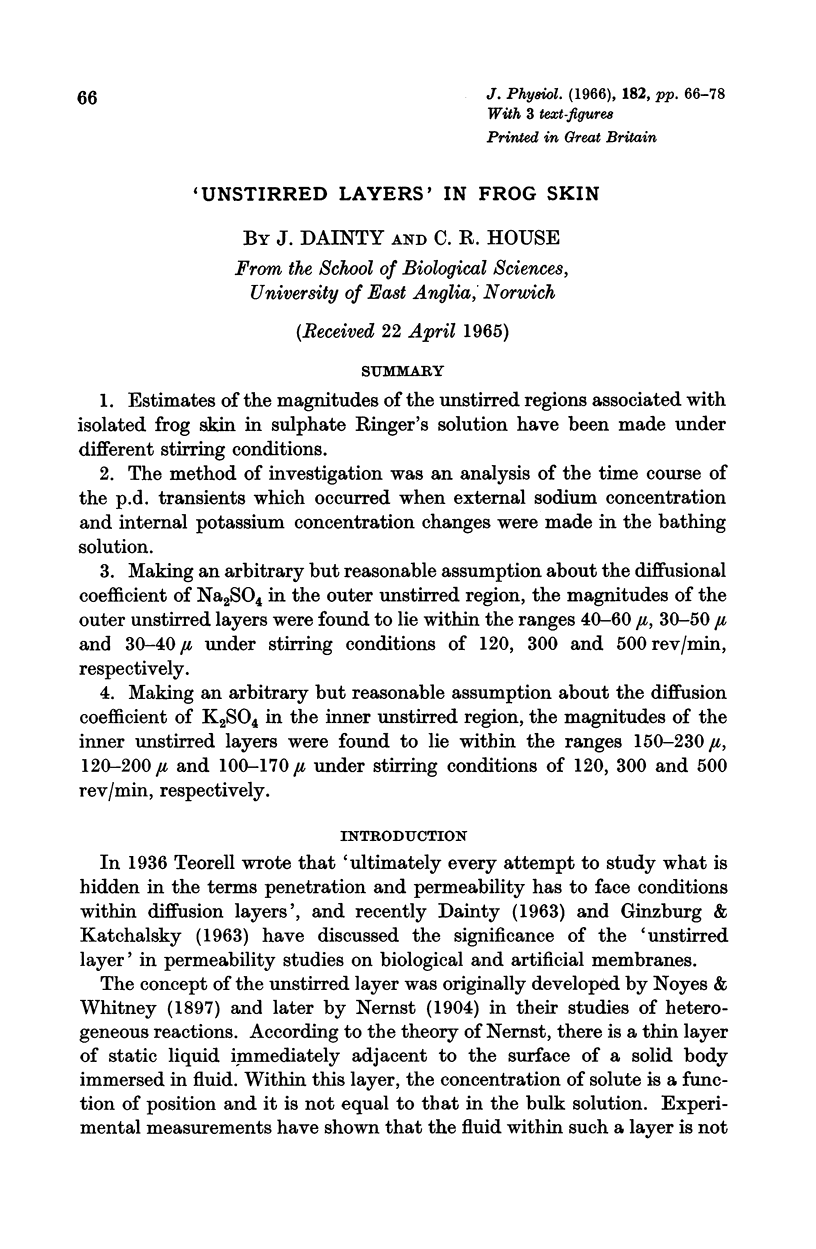
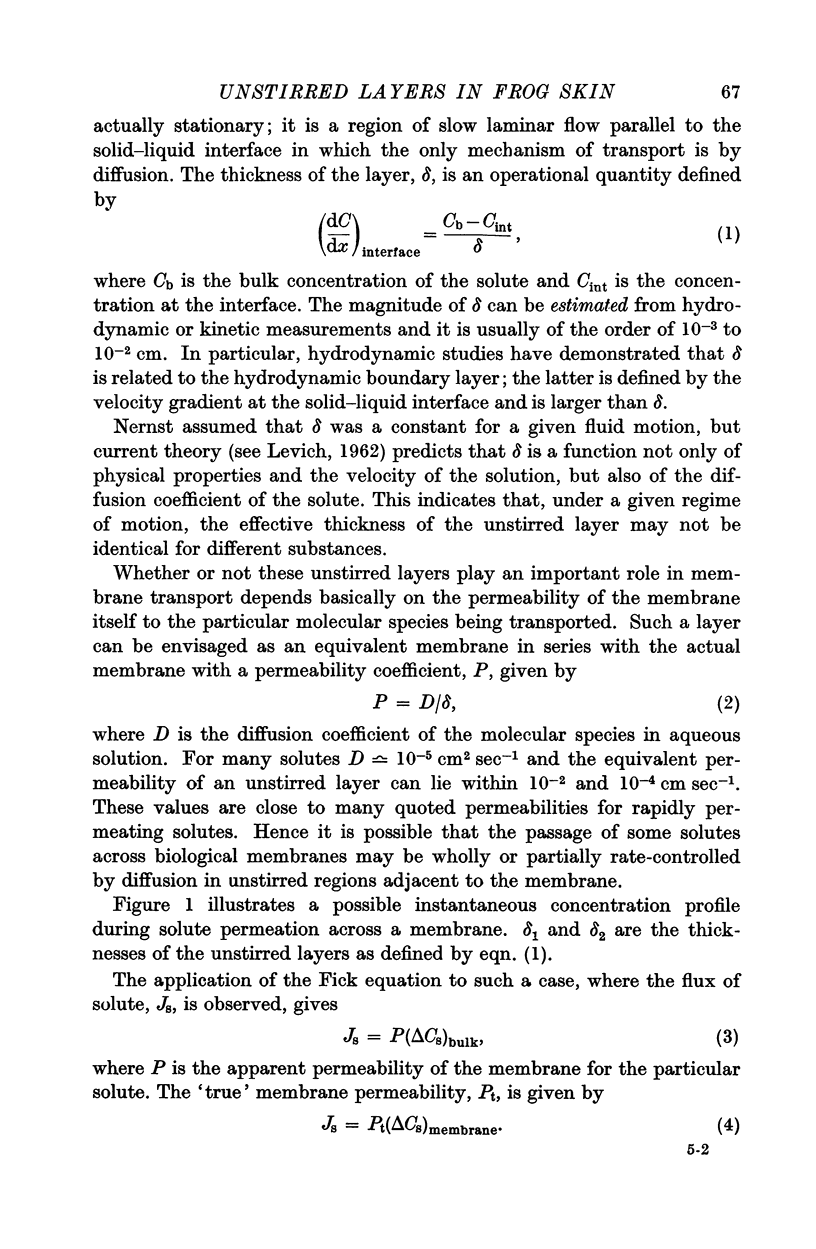
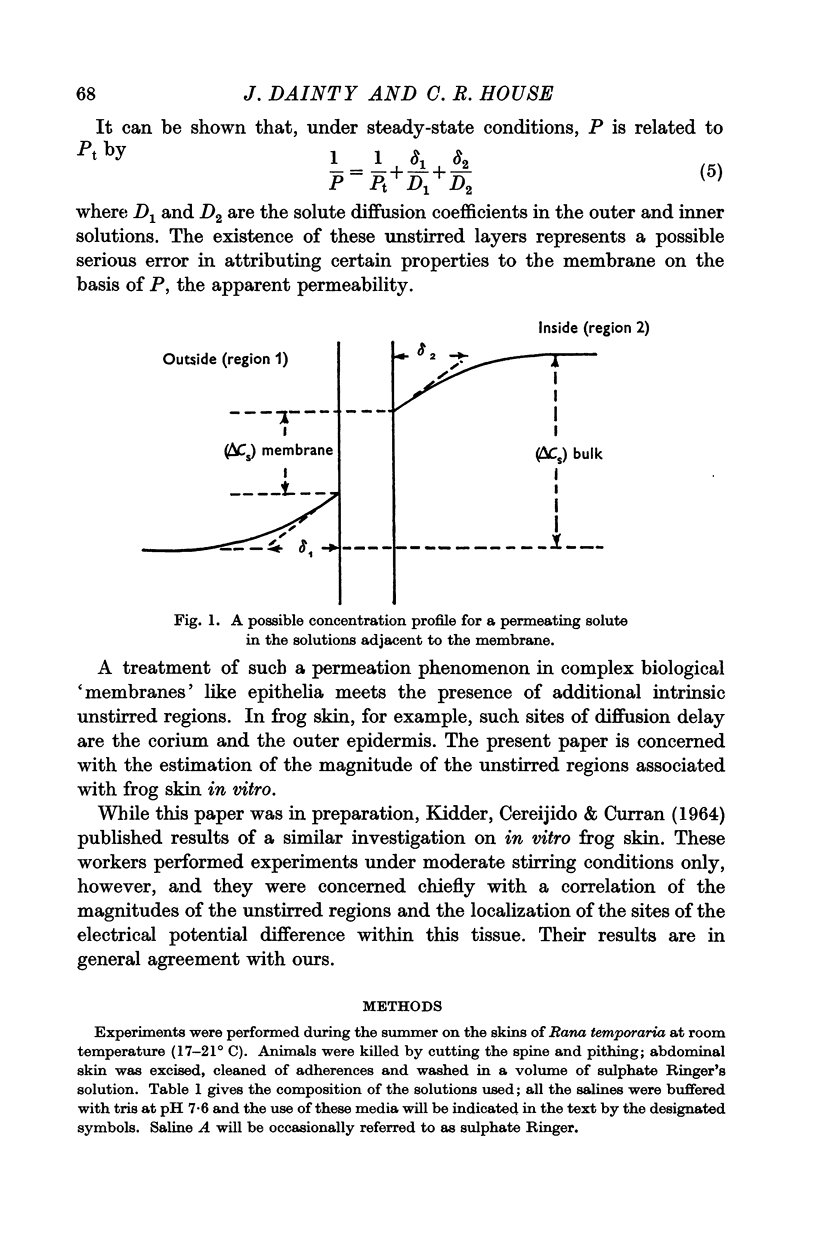
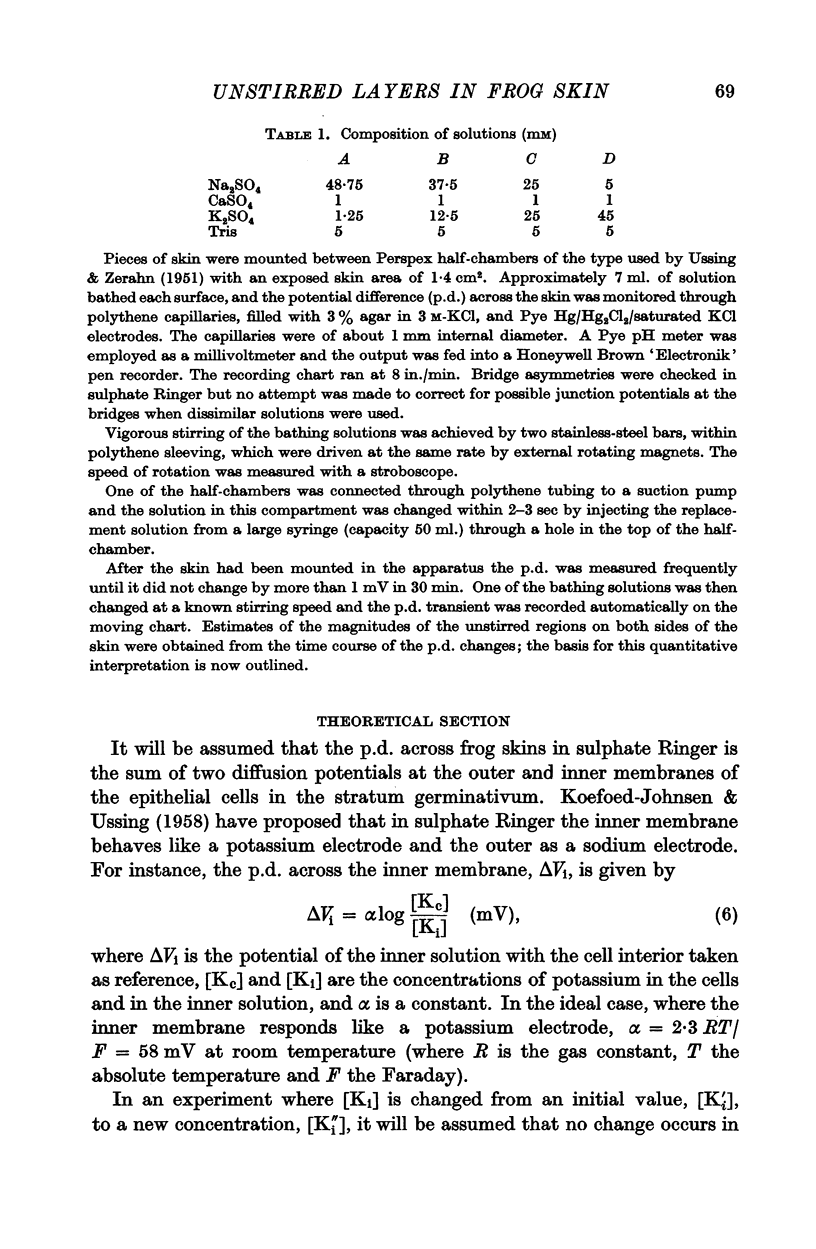
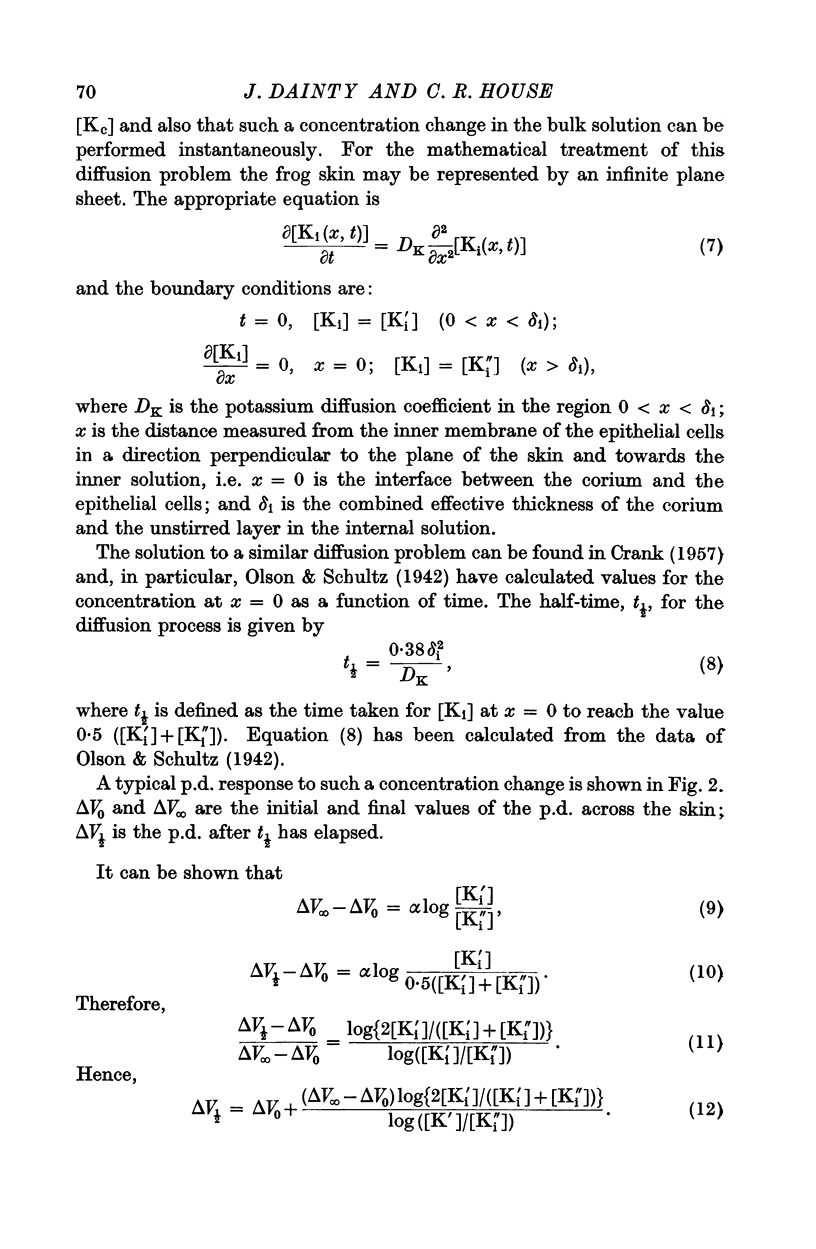

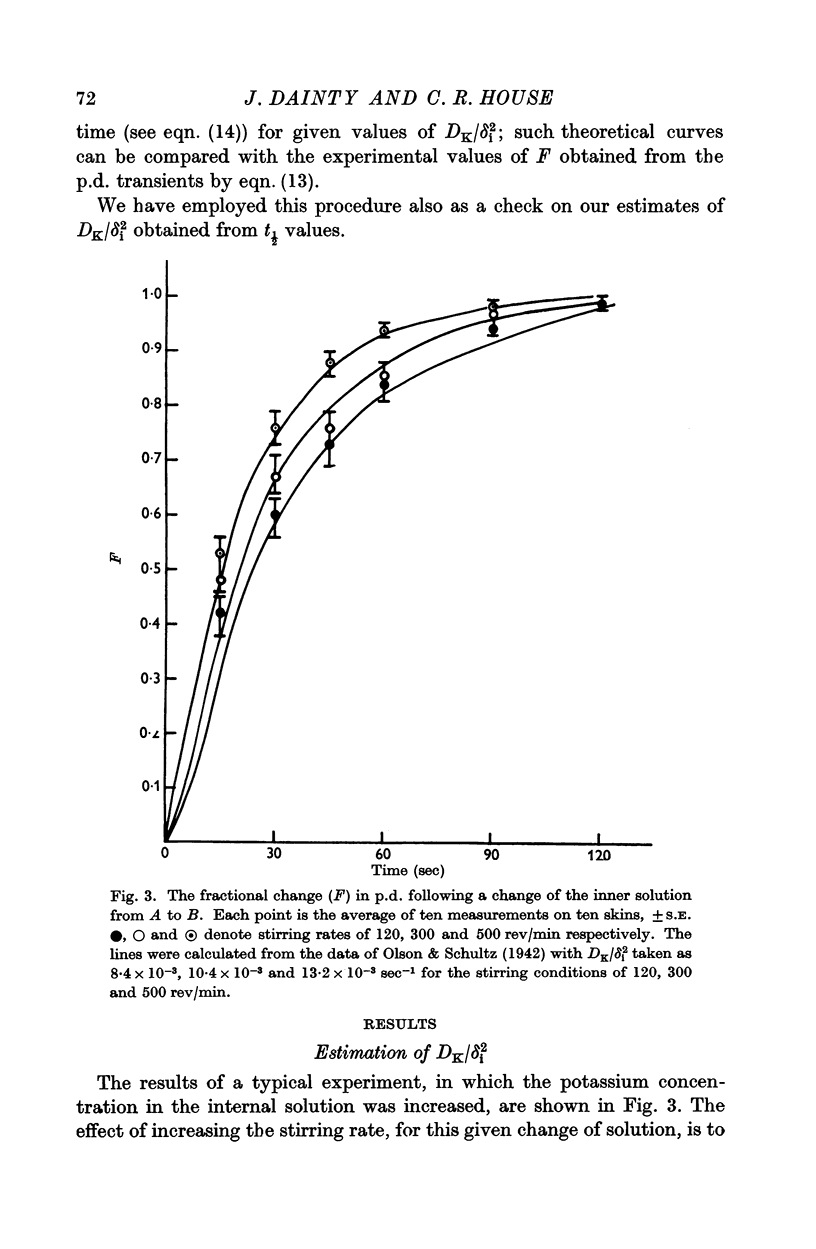
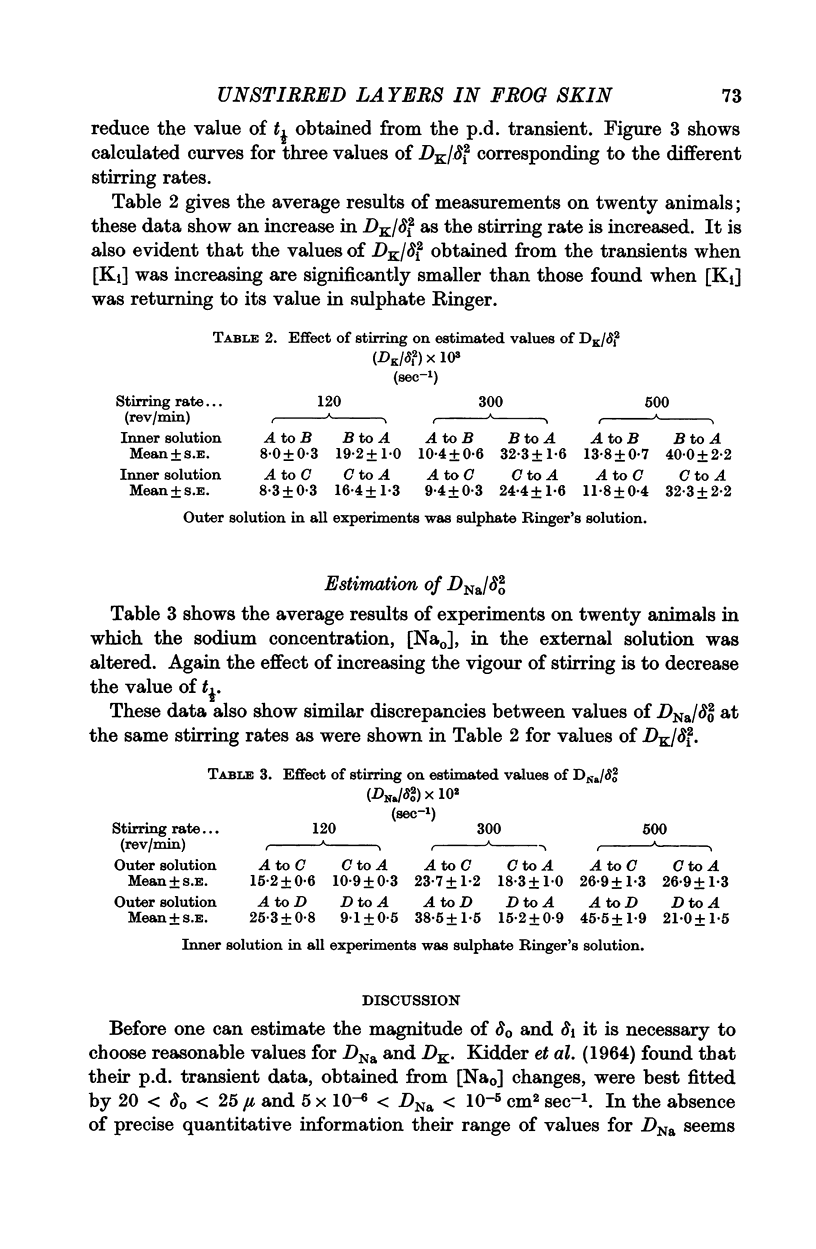

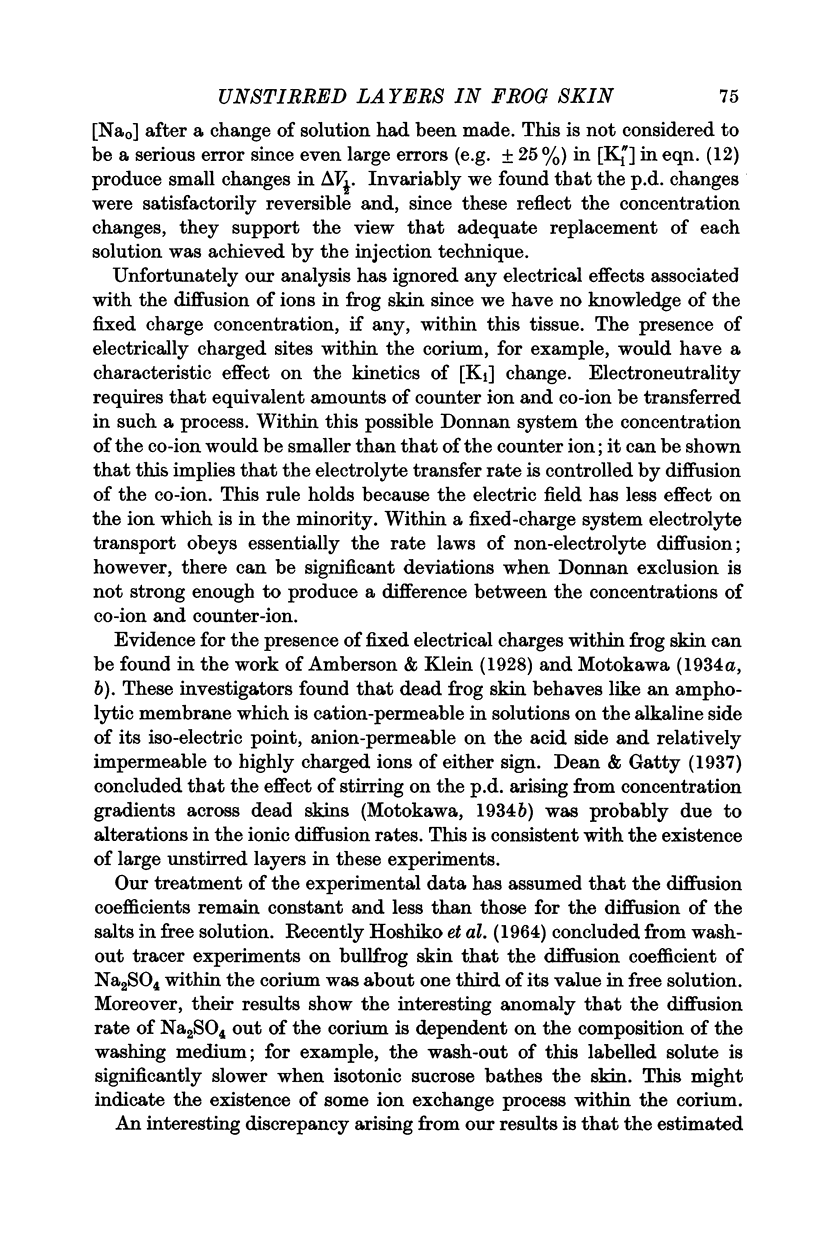
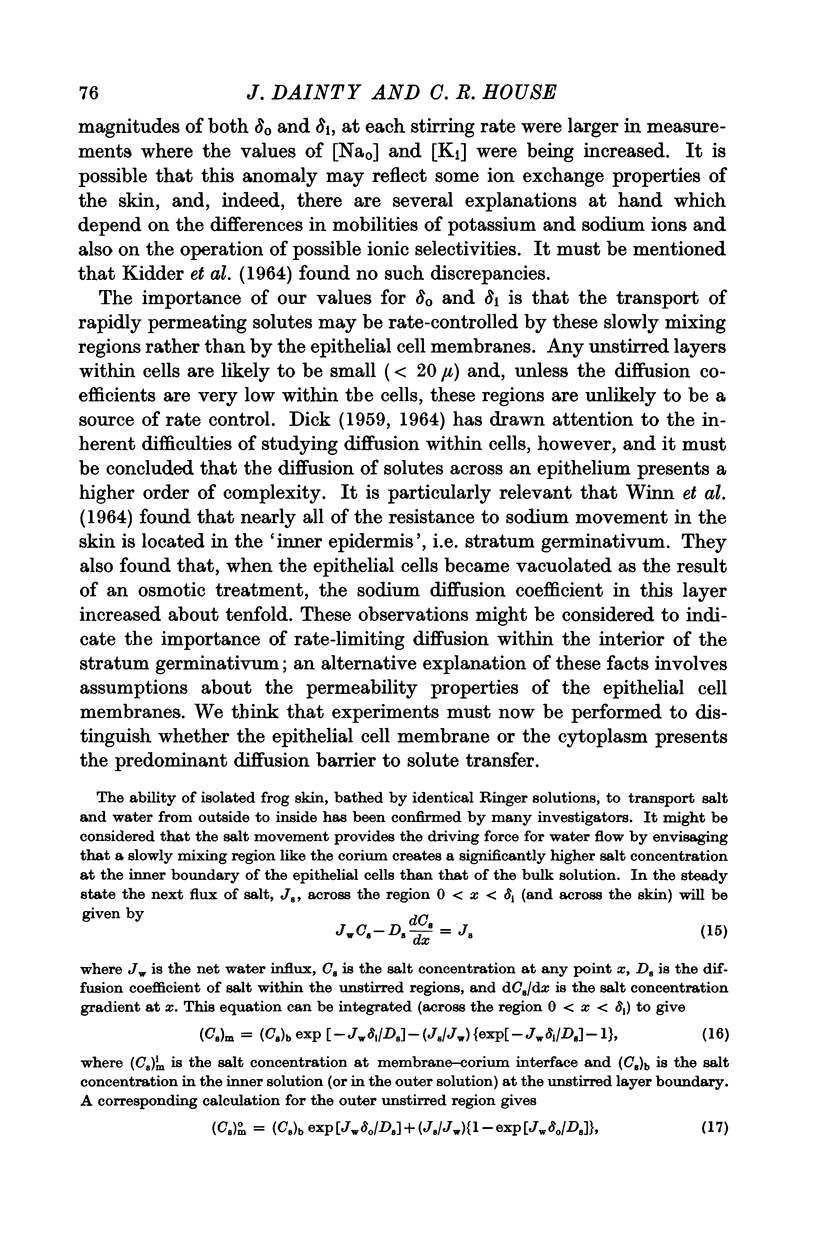
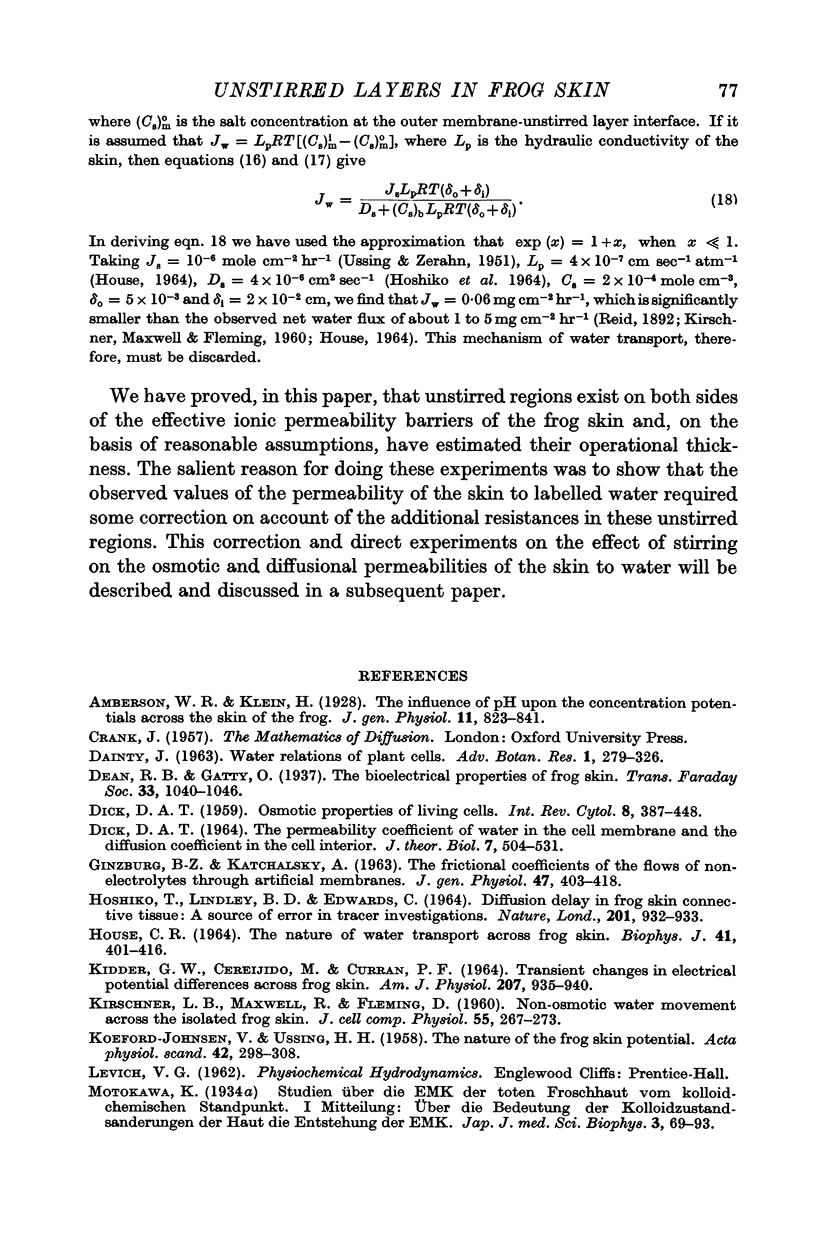
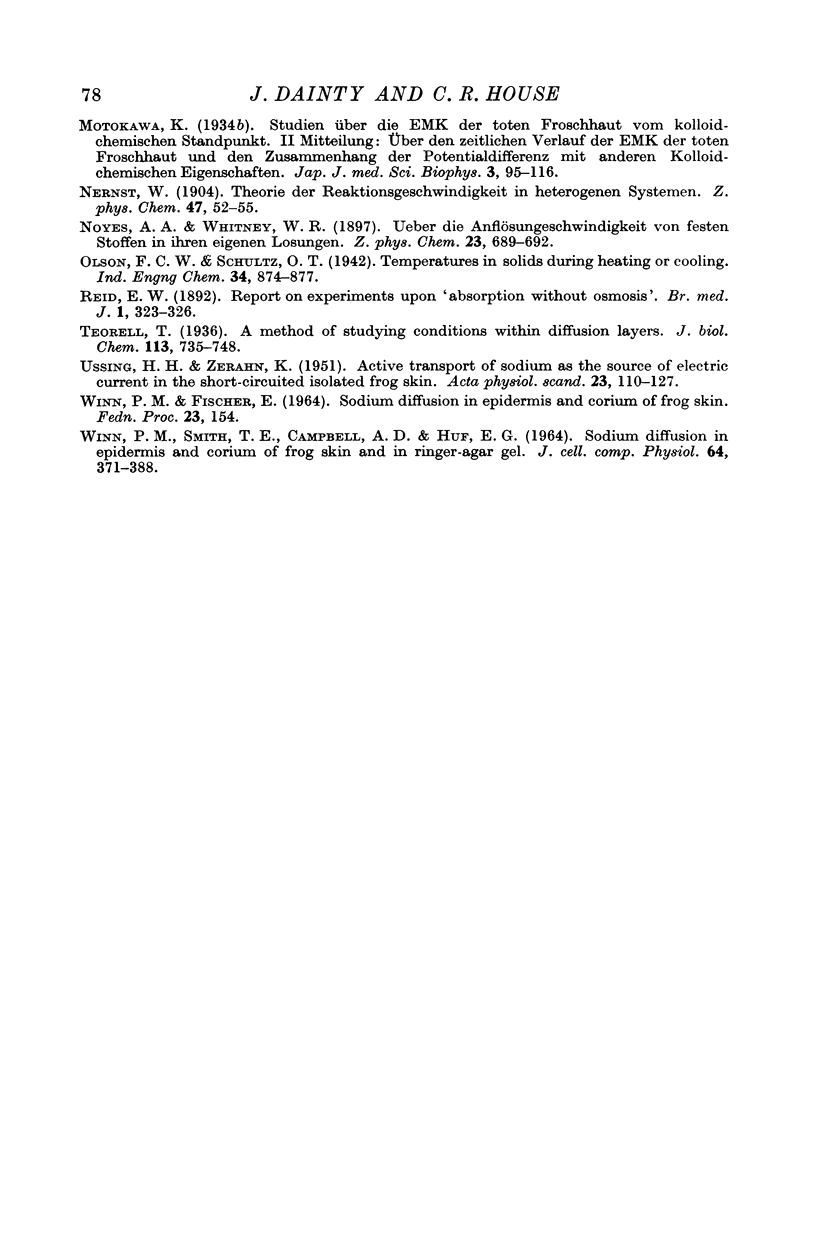
Selected References
These references are in PubMed. This may not be the complete list of references from this article.
- DICK D. A. Osmotic properties of living cells. Int Rev Cytol. 1959;8:387–448. doi: 10.1016/s0074-7696(08)62736-9. [DOI] [PubMed] [Google Scholar]
- Dick D. A. The permeability coefficient of water in the cell membrane and the diffusion coefficient in the cell interior. J Theor Biol. 1964 Nov;7(3):504–531. doi: 10.1016/0022-5193(64)90019-0. [DOI] [PubMed] [Google Scholar]
- GINZBURG B. Z., KATCHALSKY A. THE FRICTIONAL COEFFICIENTS OF THE FLOWS OF NON-ELECTROLYTES THROUGH ARTIFICIAL MEMBRANES. J Gen Physiol. 1963 Nov;47:403–418. doi: 10.1085/jgp.47.2.403. [DOI] [PMC free article] [PubMed] [Google Scholar]
- HOSHIKO T., LINDLEY B. D., EDWARDS C. DIFFUSION DELAY IN FROG SKIN CONNECTIVE TISSUE: A SOURCE OF ERROR IN TRACER INVESTIGATIONS. Nature. 1964 Feb 29;201:932–933. doi: 10.1038/201932a0. [DOI] [PubMed] [Google Scholar]
- HOUSE C. R. THE NATURE OF WATER TRANSPORT ACROSS FROG SKIN. Biophys J. 1964 Sep;4:401–416. doi: 10.1016/s0006-3495(64)86791-6. [DOI] [PMC free article] [PubMed] [Google Scholar]
- KIDDER G. W., 3rd, CEREIJIDO M., CURRAN P. F. TRANSIENT CHANGES IN ELECTRICAL POTENTIAL DIFFERENCES ACROSS FROG SKIN. Am J Physiol. 1964 Oct;207:935–940. doi: 10.1152/ajplegacy.1964.207.4.935. [DOI] [PubMed] [Google Scholar]
- KIRSCHNER L. B., MAXWELL R., FLEMING D. Non-osmotic water movement across the isolated frog skin. J Cell Comp Physiol. 1960 Jun;55:267–273. doi: 10.1002/jcp.1030550309. [DOI] [PubMed] [Google Scholar]
- KOEFOED-JOHNSEN V., USSING H. H. The nature of the frog skin potential. Acta Physiol Scand. 1958 Jun 2;42(3-4):298–308. doi: 10.1111/j.1748-1716.1958.tb01563.x. [DOI] [PubMed] [Google Scholar]
- USSING H. H., ZERAHN K. Active transport of sodium as the source of electric current in the short-circuited isolated frog skin. Acta Physiol Scand. 1951 Aug 25;23(2-3):110–127. doi: 10.1111/j.1748-1716.1951.tb00800.x. [DOI] [PubMed] [Google Scholar]
- WINN P. M., SMITH T. E., CAMPBELL A. D., HUF E. G. SODIUM DIFFUSION IN EPIDERMIS AND CORIUM OF FROG SKIN AND IN RINGER-AGAR GEL. J Cell Physiol. 1964 Dec;64:371–387. doi: 10.1002/jcp.1030640310. [DOI] [PubMed] [Google Scholar]


